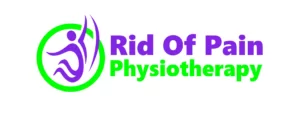Spine and Back Pain
Spine and Back pain is a very common problem. Nowadays it happens due to overuse injuries. It is the most common problem for absence from work and for seeking medical treatment. 30-40 percent of people suffer from spine pain in their lives.
It is one of the musculoskeletal disorders which happens due to overuse injuries at the workplace/ occupation. It can also result from any injury or degenerative changes of biomechanical faults. Back pain can affect people of any age group for different reasons. As people get older tendency for lower back pain and neck pain increases.

Causing factors of spinal back pain
Multiple factors cause spine pain because our backbone is supported by muscles and ligaments. It acts like a pillar for the body.
- Muscle or Ligament Injury: Spine pain can result from muscle strain/ spasm or ligament tear. Muscle strain always gives severe pain while moving the body. There are various reasons which can lead to strains or spasms like:
- lifting something/ weight improperly
- lifting something too heavy
- doing an abrupt/ sudden and awkward movement
- muscle stiffness/ muscle imbalance
- Anatomical/Structural Problem
Various problems can cause back pain.
- Ruptured Disks/ Disc Bulge: Each vertebra in the spine is cushioned by disks. If the disk ruptures or bulges out, can cause more pressure on a nerve and result in back pain.
- Radiating Pain: impingement of the nerve in the neck or back can lead to radiating pain in the arm or leg.
- Arthritis/ Degenerative Changes: Osteoarthritis can cause degenerative changes in joints and vertebrae. It can result in spine pain and, In some cases, the space around the spinal cord narrows. This is known as spinal stenosis.
- Abnormal Curvature of the Spine: If the spine curves in an unusual way, spine pain can result like hyperlordosis, kyphosis, or scoliosis
- Osteoporosis: Bones, including the vertebrae of the spine, become weak and porous, making compression fractures more likely.
- Postural problems causing Spine Pain
Long sitting with hunched back position on a laptop or computer can result in increased back and neck pain over time. Spine pain can also result from some unusual everyday activities or poor posture during work of 7-8 hours or more. It causes tension or overstretches in muscles. A long driving/ sitting job without a break causes spine pain even when not hunched.
sleeping on a mattress that does not support the body and keeps the spine straight may also cause back pain.
- Medical problems
Some medical conditions can cause back pain.
- Cauda equina syndrome :The cauda equine is a medical condition in which a bundle of spinal nerve roots arises from the lower end of the spinal cord. These provide the ability to move and feel sensations in the legs and the bladder. Symptoms include a dull pain in the lower back and upper buttocks, as well as numbness in the buttocks, genitalia, and thighs. There are sometimes bowel and bladder function disturbances.
- Cancer of the spine: A tumor(pot spine)on the spine may press against a nerve, resulting in back pain.
- Infection of the Spine: Any infection in the back can cause back pain. Other inflammatory diseases like ankylosing spondylosis and Rheumatoid arthritis cause back pain.
- Mental Illness: stress, anxiety, depression, and work-related psychological problems can cause muscle stiffness which leads to back pain.
- Other factors
A few other factors can also lead to back pain like pregnancy, lack of physical activities, age and excess weight, etc.
Sign and Symptoms
Symptoms of spinal back pain are a pain in the backbone, pain in muscles around the spinal vertebrae, leg pain, and hip pain. Sometimes it may cause pain somewhere in the body which may be due to nerve compression or referred pain.
Symptoms
- Inflammation or swelling on the back
- Persistent back pain, even in lying or resting
- Pain down the legs
- Pain that reaches below the knees
- Pain due to injury or trauma to the back
- Urinary incontinence
- Difficulty urinating
- Fecal incontinence, or loss of control over bowel movements
- Numbness around the hips
- Knee pain
- Difficulty in walking
- Disturbed gait pattern
Treatment
Physiotherapy has an important role in the case of back pain. 80-90 percent of cases can be treated with the physiotherapy which includes:
- Neck Pain
- Back Pain
- Lumbar spondylosis
- Cervical spondylosis
- Acute Torticollis
- Wry Neck
- Cervicogenic Headaches
- Whiplash Injuries
- Nerve tension and Neural Entrapment
- Trapped Nerves
- Prolapsed/Slipped Discs
- Facet Joint Dysfunction
- Muscle Spasm
- Postural Conditions
- Sciatica
- Nerve Root Irritation
- Sacroiliac Joint Dysfunction
- Spondylolisthesis
- Pre/Post Pregnancy Back and Pelvic Pain
RID OF PAIN PHYSIOTHERAPY
BEST PHYSIOTHERAPY CLINIC IN GURGAON- PHYSIOTHERAPY
- OSTEOPATHY
- CHIROPRACTIC
- STRESS HEALING
